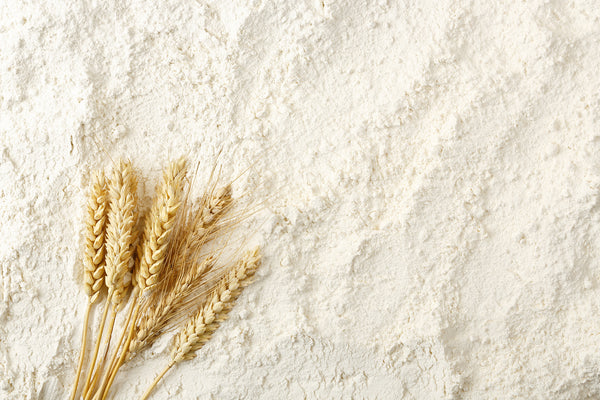Wheat Flour
Wheat flour is a finely ground powder derived from the grinding of wheat grains. It is a staple ingredient in many diets around the world, used in a wide variety of culinary applications.
Reviews (0)
Types of Wheat Flour
-
All-Purpose Flour:
- Made from a blend of hard and soft wheat.
- Versatile and used in a wide variety of recipes, such as cakes, cookies, and bread.
-
Whole Wheat Flour:
- Made from grinding the entire wheat kernel (bran, germ, and endosperm).
- High in fiber, with a denser texture and nuttier flavor.
-
Bread Flour:
- Contains higher protein (gluten) content.
- Ideal for yeast bread as it gives a chewy texture and good structure.
-
Cake Flour:
- Finely milled with low protein content.
- Produces soft, tender cakes and pastries.
-
Pastry Flour:
- A balance between cake and all-purpose flour.
- Ideal for flaky pie crusts and cookies.
-
Semolina Flour:
- Coarsely ground from durum wheat.
- Commonly used for pasta and certain baked goods.
-
Self-Rising Flour:
- Pre-mixed with baking powder and salt.
- Simplifies baking quick breads, biscuits, and pancakes.
-
Gluten-Free Flour (Wheat Alternative):
- Made from non-wheat sources like rice, almond, or coconut for gluten-sensitive individuals.
Nutritional Value (per 100g of All-Purpose Flour)
- Calories: 364 kcal
- Protein: 10.3 g
- Carbohydrates: 76.3 g
- Dietary Fiber: 2.7 g
- Fat: 0.9 g
- Vitamins & Minerals: Rich in iron, magnesium, and B vitamins (depending on processing).
Uses of Wheat Flour
-
Baking:
- Key ingredient for making bread, cakes, cookies, muffins, and pastries.
- Provides structure and texture to baked goods through gluten formation.
-
Thickening Agent:
- Used in soups, gravies, and sauces to thicken liquids.
-
Pasta and Noodles:
- Semolina or durum wheat flour is essential for making traditional pasta and noodles.
-
Coating for Frying:
- Acts as a light coating for fried foods like chicken or vegetables, adding crispiness.
-
Flatbreads and Pancakes:
- Used to prepare tortillas, naan, roti, and pancakes.
-
Binding Agent:
- Helps bind ingredients in recipes like meatballs or veggie patties.
-
Fermentation Medium:
- Essential for sourdough starters and other fermentation-based baked goods.
-
Craft and Non-Food Uses:
- Homemade playdough, paper mache, or as a base for biodegradable adhesives.
Storage Tips
- Store in an airtight container in a cool, dry place.
- Whole wheat flour should be refrigerated or frozen to prevent rancidity due to its oil content.
- Check for expiration dates and signs of spoilage like a musty odor or clumping.
Interesting Facts
- The protein (gluten) content in wheat flour determines its elasticity and use in specific recipes.
- Refined flour is often enriched to restore lost nutrients during processing.
- Whole wheat flour is healthier due to its higher fiber and nutrient content.
Let me know if you'd like me to focus on specific aspects or expand this further!
